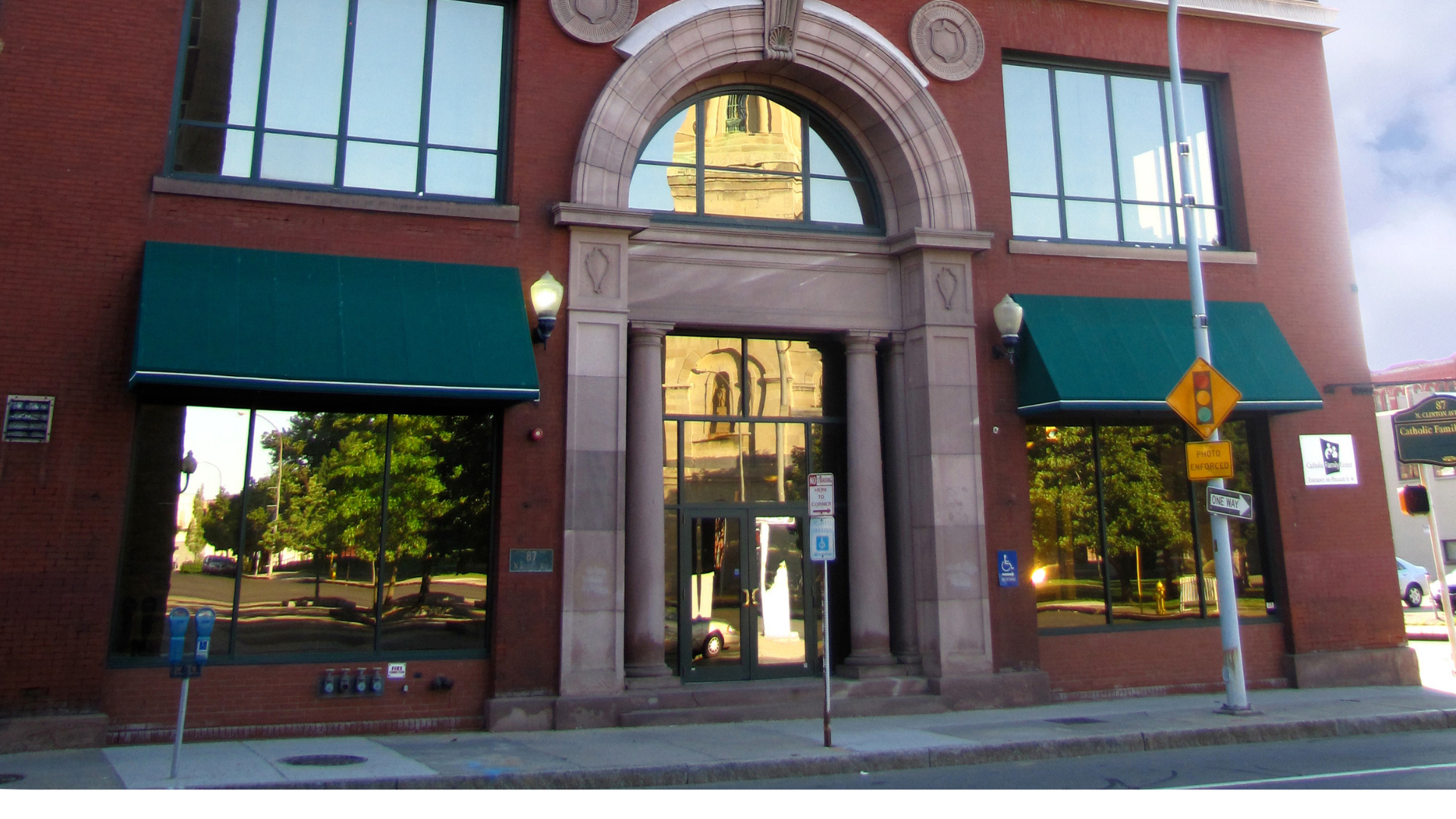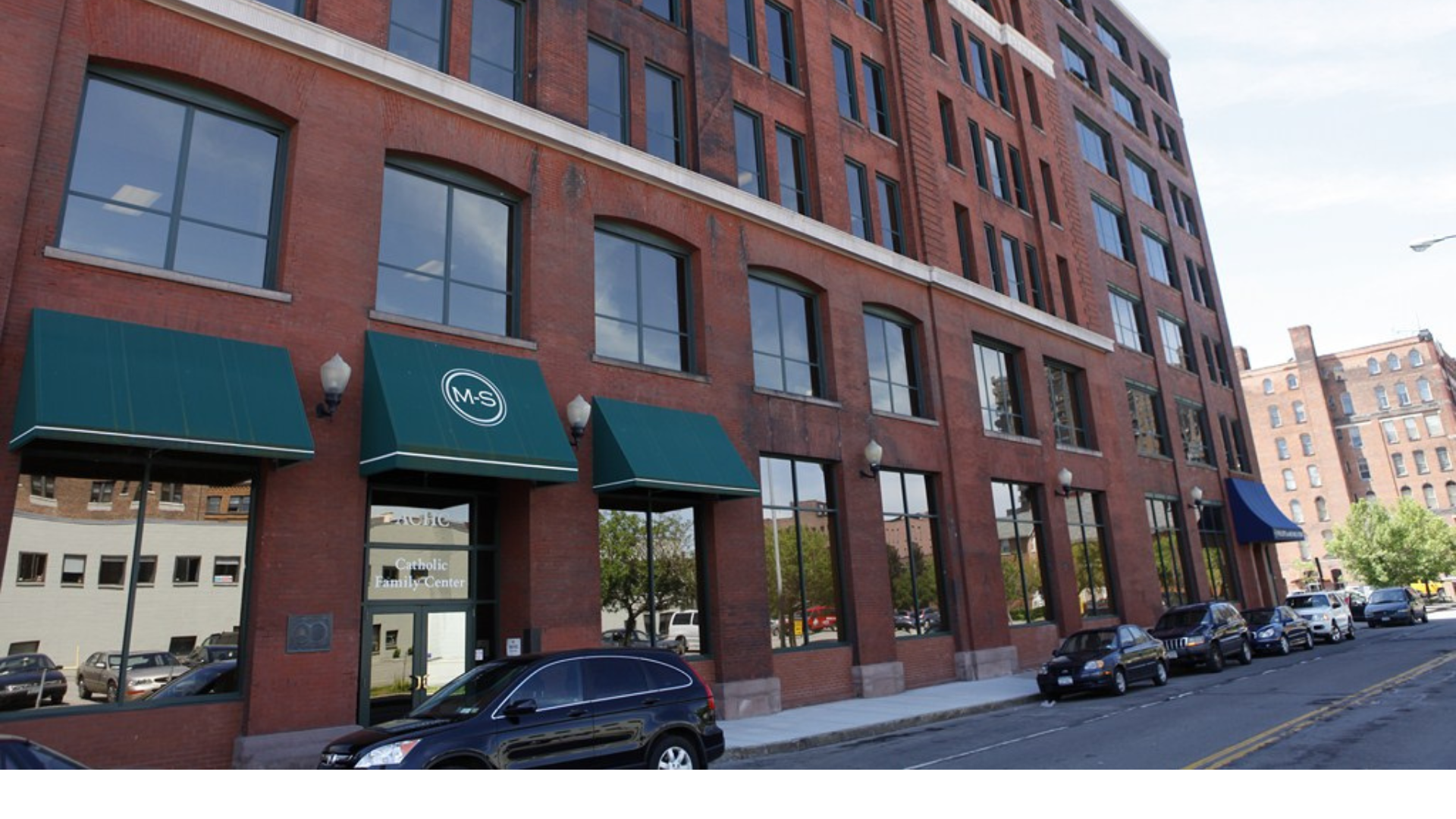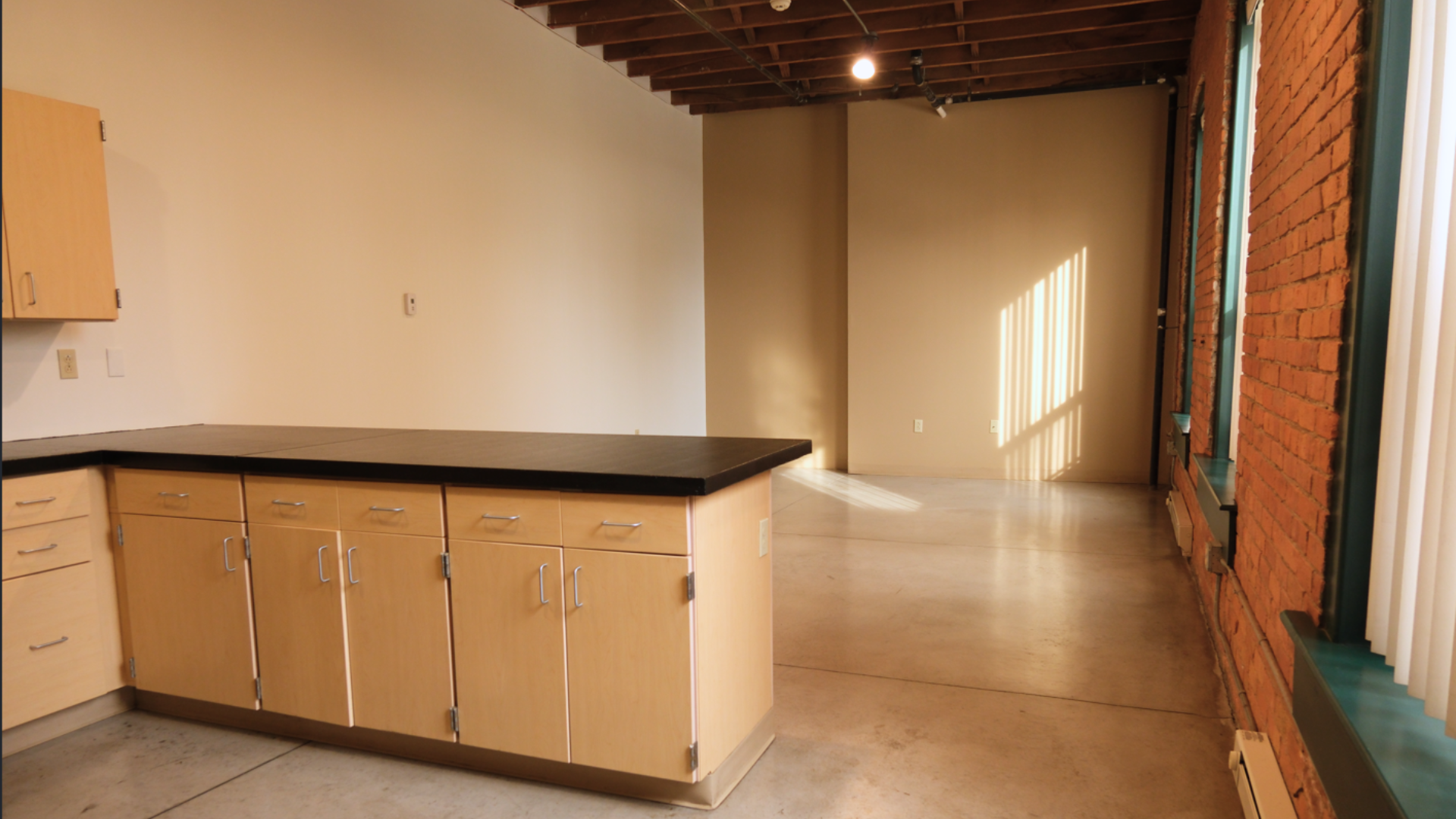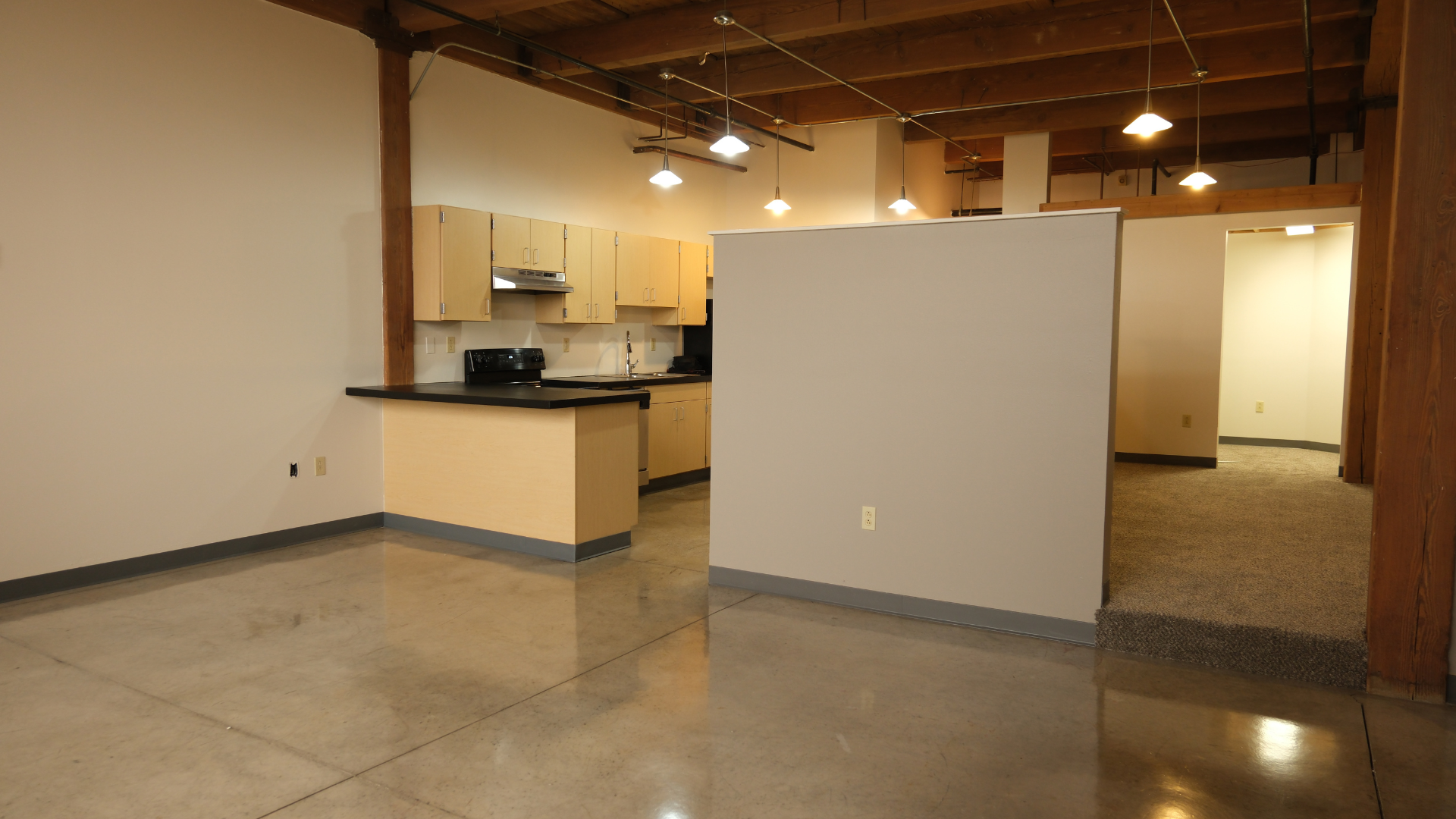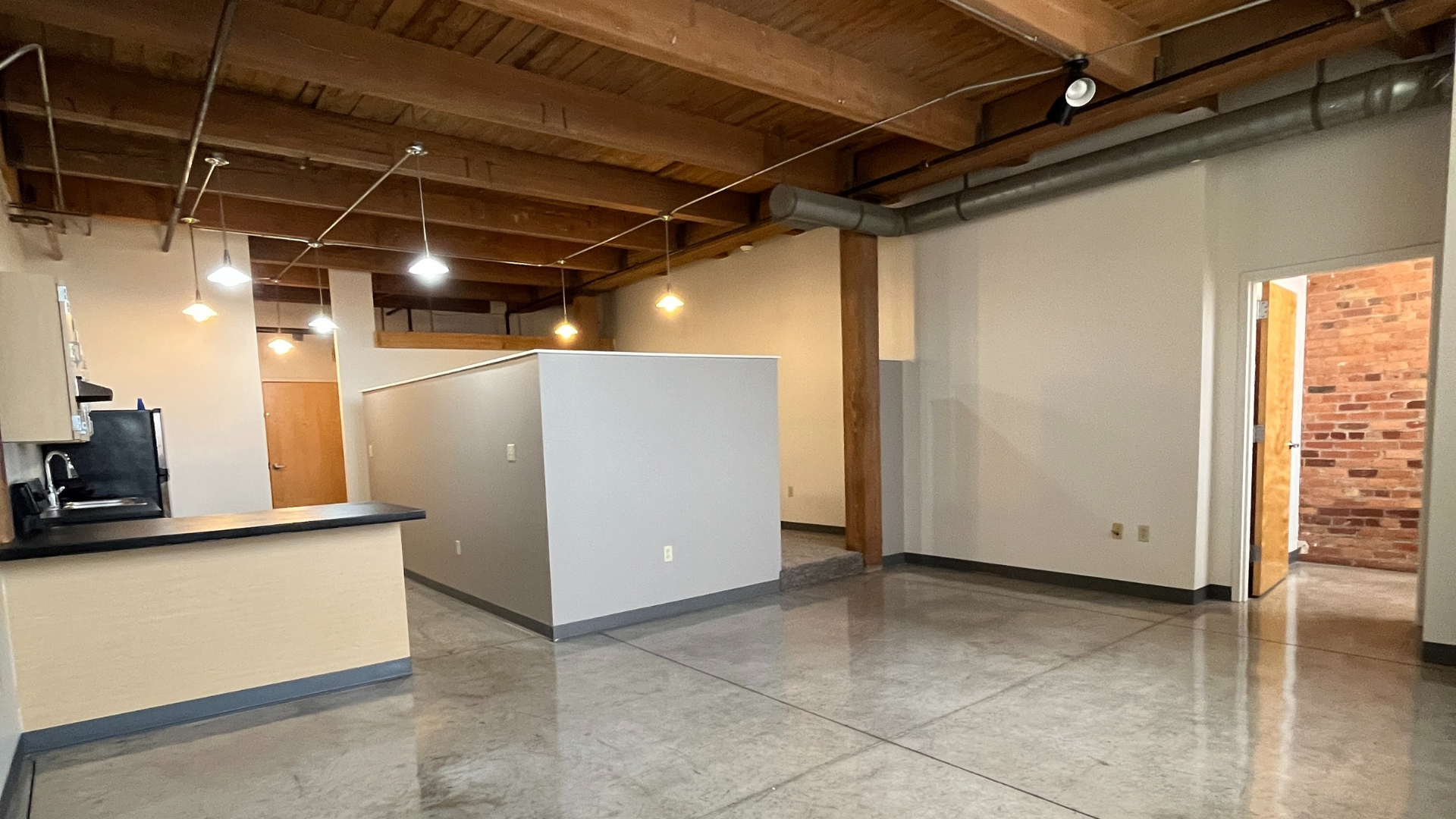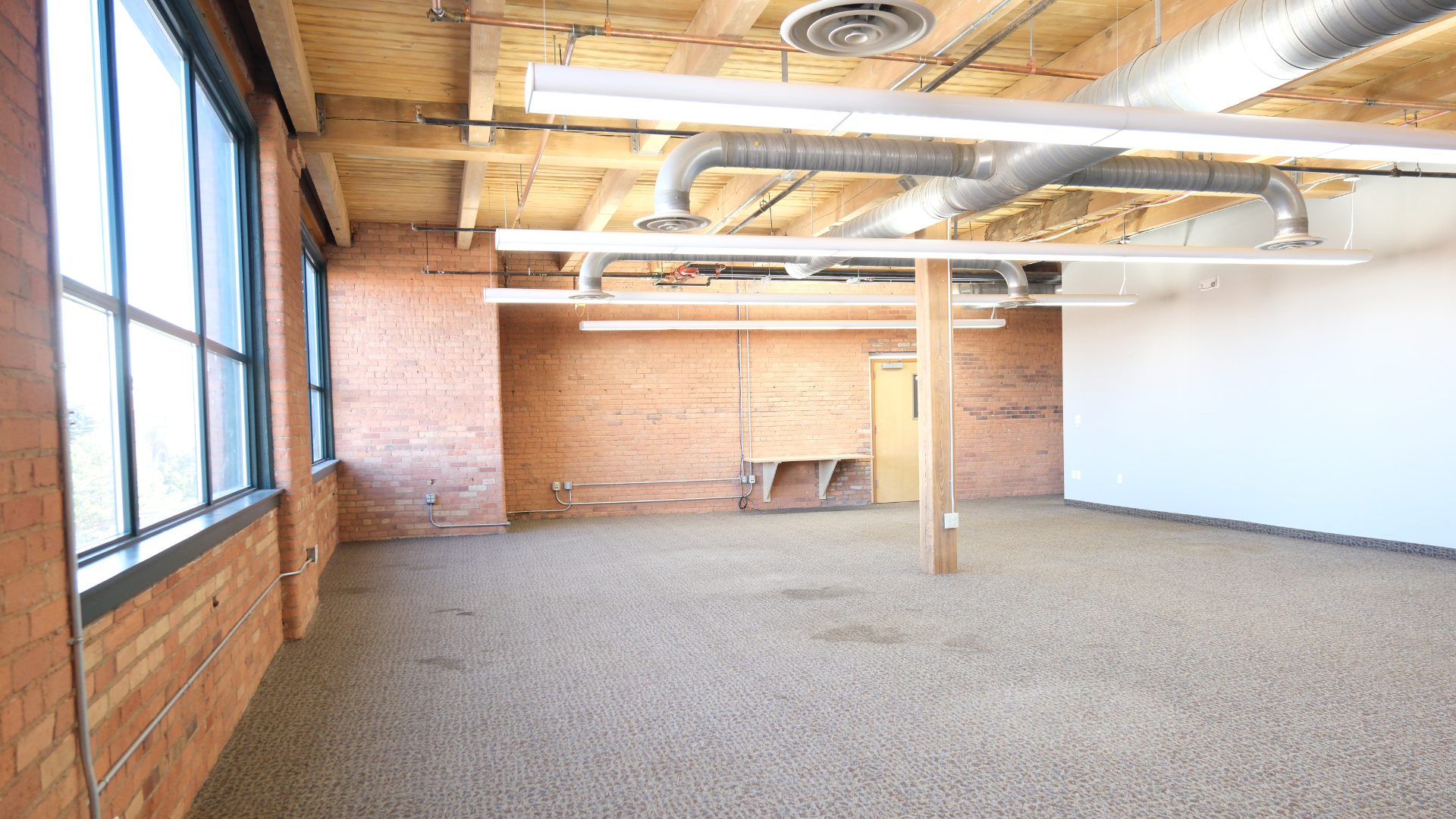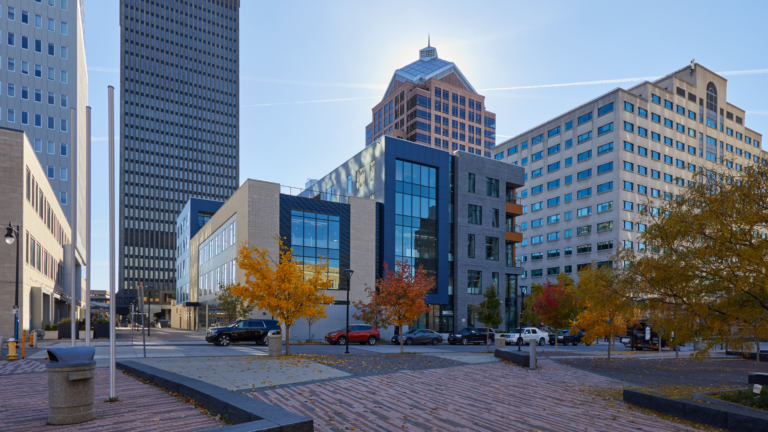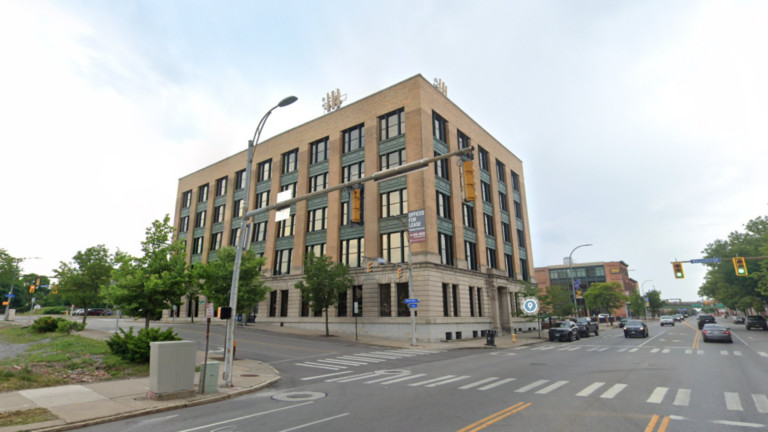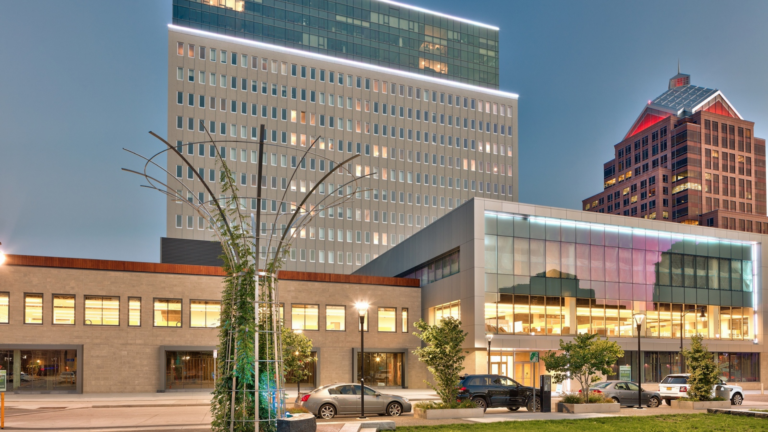View All Properties / The Lofts at Michaels-Stern
AVAILABLE
The Lofts at Michaels-Stern
87 N Clinton Ave, Rochester, NY 14604
Overview
Four floors each of 17,000+ square feet of office space and three floors of high-end 515-1,267 loft apartments. Located in Downtown Rochester, walk to all downtown offices as well as the St. Paul Quarter, High Falls, East End, Frontier Field and War Memorial. Easy expressway access and garage parking available.
Executive suites are available starting at 100 square feet. They feature common conference rooms, restrooms, and kitchenette. Other available office spaces include a 1,646 square foot space and a 18,624 square foot space with high ceilings, exposed brick and beams, and beautiful city views.
Executive suites are available starting at 100 square feet. They feature common conference rooms, restrooms, and kitchenette. Other available office spaces include a 1,646 square foot space and a 18,624 square foot space with high ceilings, exposed brick and beams, and beautiful city views.
Property Information
Address:
87 N Clinton Ave, Rochester, NY 14604
87 N Clinton Ave, Rochester, NY 14604
Square Footage: 515-18,624
Bedrooms: 0
Bathrooms: 1
Commercial Leasing Agent
Kamilah Curtis
(585) 287-5868
Additional Resources
Location
Related Properties
260 East Broad
Available
260 E Broad St, Rochester, NY 14604
250-3,250
Adam Borrell, Tom Duck
(585) 615-3593
Washington Building
Available
Rochester, NY 14614
2,457-2,849
Tower280
Available
Rochester, NY 14604
749-10,514
Buckingham Properties
259 Alexander Street
Rochester, NY 14607
Mon - Fri 8:00 AM – 5:00 PM

